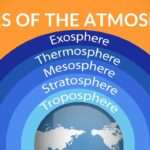Introduction
In the fast-evolving realm of technology, Artificial Intelligence (AI) stands as a transformative force across various industries. Among its most thrilling applications is in video creation, where AI unleashes unparalleled capabilities for producing captivating and compelling content. This article delves into the intricacies of harnessing AI to craft cutting-edge videos, ushering in a world of fresh possibilities for both content creators and businesses.
Understanding AI-Powered Video Creation
The fusion of AI and video production leverages sophisticated algorithms to mechanize various facets of the creative process. From conceiving scripts and storyboards to curating visuals and even perfecting voiceovers, AI has the potential to streamline and elevate every facet of video creation.
Generating Scripts and Storyboards
The heart of any video is its narrative. AI’s prowess lies in its ability to dissect extensive datasets, culminating in the development of compelling scripts and storyboards. By scrutinizing trending topics, audience inclinations, and popular content, AI algorithms can propose enthralling narratives and visual sequences, thus sparing creators invaluable time and effort.

Visual Selection and Editing
Selecting the right visuals is akin to painting the canvas of a video. AI algorithms can meticulously navigate sprawling repositories of images, videos, and animations, cherry-picking the visuals most resonant with the intended audience. This not only accelerates the editing process but also ensures a visual resonance that captivates viewers.
Voiceovers and Audio Enhancement
The auditory dimension of videos receives an AI-infused upgrade through Natural Language Processing (NLP). By simulating human-like voices, AI seamlessly integrates voiceovers, imbuing videos with professional-grade audio quality. AI’s knack for noise reduction and sound optimization further refines the auditory experience, culminating in a polished end product.
Automated Video Editing
AI-driven video editing tools serve as virtual editors, autonomously dissecting footage to construct a cohesive and visually appealing video. This automation proves particularly invaluable for assembling event highlights, product showcases, vlogs, and more, streamlining the creative process.

Personalization and Audience Engagement
AI’s analytical prowess extends to viewer behavior and preferences, facilitating the creation of personalized video content. The outcome is a dynamic interplay of visuals, text, and audio, catered to individual viewers. This customization elevates engagement and viewer retention rates, setting the stage for immersive content experiences.
Tools and Platforms for AI-Powered Video Creation
Several pioneering platforms have emerged to facilitate AI-driven video creation, revolutionizing the creative landscape:
- Magisto: A platform that wields AI to metamorphose raw footage into polished videos with minimal exertion.
- Lumen5: This AI-powered tool metamorphoses textual content into captivating video presentations.
- Wibbitz: Automation is the cornerstone of this platform, enabling the rapid production of news-style videos through AI.
- Adobe Sensei: Adobe’s AI framework encompasses intelligent audio and video editing, simplifying the creation of top-tier content.

Best Practices for AI-Enhanced Video Production
While AI unfurls an array of possibilities for video creation, creators should adhere to certain principles:
- Maintain Creative Control: While AI’s automation is potent, creative input remains pivotal to ensure video alignment with the intended message and brand.
- Regularly Update AI Models: Given the fluid nature of AI algorithms, consistent updates are essential to harness the latest advancements.
- Synergy of AI and Human Expertise: The pinnacle of impactful videos is often the result of AI-human collaboration. AI should amplify and streamline creative processes without supplanting human innovation.
Exploring the Future Possibilities
The horizon of AI-powered video creation brims with futuristic potential:
1. Virtual Reality (VR) and Augmented Reality (AR) Integration
The convergence of AI video creation with VR and AR could usher in immersive and interactive video experiences. This could reinvent training, education, and virtual tours by fabricating lifelike scenarios that captivate users.
2. Real-time Video Generation
Imagine AI generating videos on-the-fly, responding to current events, trends, or user interactions. This could expedite content production for news updates, event coverage, and personalized greetings, fostering dynamic and immersive viewing experiences.
3. Deep Emotional Context
AI’s evolving comprehension of human emotions might lead to videos that not only disseminate information but also evoke specific emotional responses. From heartwarming tales to suspenseful narratives, AI could orchestrate videos that tug heartstrings or keep viewers on tenterhooks.
4. Multi-Language and Global Content
AI’s adeptness in language translation could enable videos tailored for global audiences. Videos could be effortlessly translated and localized, dissolving language barriers and enabling businesses to reach wider demographics.
5. Enhanced Analytics and Insights
AI-powered video creation could proffer creators and businesses with granular insights into viewer behavior. This data could shape content strategies, illuminating what resonates with audiences and fine-tuning videos for maximum impact.
Addressing Concerns and Ethical Considerations
Even as the benefits of AI-powered video creation abound, pertinent concerns and ethical considerations arise:
1. Loss of Human Jobs
The encroachment of AI could potentially displace jobs in the video production domain. Balancing AI utilization with nurturing human creativity and expertise is imperative.
2. Misinformation and Deepfakes
AI’s increasing aptitude in crafting realistic content raises the specter of misinformation and deepfakes. Upholding authenticity and credibility in videos will be a recurring challenge.
3. Privacy and Data Security
AI-driven video creation often hinges on data analysis, spotlighting potential privacy concerns. Safeguarding user data and adhering to data protection regulations will be pivotal.
4. Bias and Diversity
AI algorithms can inadvertently perpetuate biases contained within their training data. Creators must diligently ensure that AI-generated content remains inclusive and represents diverse perspectives.
Embracing an Exciting Future
To conclude, AI’s metamorphosis of video creation is astonishing. From current accomplishments to imminent prospects, the amalgamation of AI and video creation is reshaping content creation, consumption, and immersion. As AI technology matures, its integration into video creation will likely become even more seamless and accessible. This arms creators and businesses with unparalleled tools to captivate and engage global audiences.
With judicious guidance, ethical mindfulness, and a commitment to preserving human ingenuity, AI-powered video creation promises to unveil a new chapter in storytelling, entertainment, and communication. The juncture of human creativity and technological advancement stands as the threshold to a future where AI catalyzes the transformation of concepts into mesmerizing visual narratives.

FAQs
Q1: Can AI entirely replace human creativity in video production?
A1: AI can automate many tasks, yet human creativity remains irreplaceable in fashioning unique and emotionally resonant content that establishes profound connections with audiences.
Q2: What limitations should we anticipate in AI-powered video creation?
A2: While AI has made remarkable strides, challenges like interpreting complex emotions and contexts remain. AI also requires human guidance to align with brand messaging accurately.
Q3: How can businesses leverage AI-generated videos for marketing endeavors?
A3: AI-fueled videos empower businesses to efficiently craft engaging marketing content, personalize messages for distinct audiences, and narrate brand stories effectively. This leads to heightened audience engagement and brand visibility.
Q4: How might AI change the landscape of content creation in the future?
A4: AI’s progressive integration could revolutionize content creation, making it more immersive, personalized, and efficient. It could democratize video production, empowering creators to realize their visions with unprecedented ease.
Q5: How does AI-enhanced video production contribute to brand differentiation?
A5: AI aids in crafting distinct and captivating videos that align with brand values. It empowers businesses to tell their unique stories, fostering a deeper connection with audiences and setting them apart in a competitive landscape.
Conclusion
The fusion of Artificial Intelligence and video creation is a catalyst for innovation. It refines processes, elevates quality, and instills a personal touch in content. Content creators and businesses at the vanguard of AI-powered video production have the opportunity to capture the essence of their messages in ways previously thought unattainable. As AI evolves, the vistas of video creation expand limitlessly, beckoning creators to craft visually captivating and emotionally resonant narratives.







